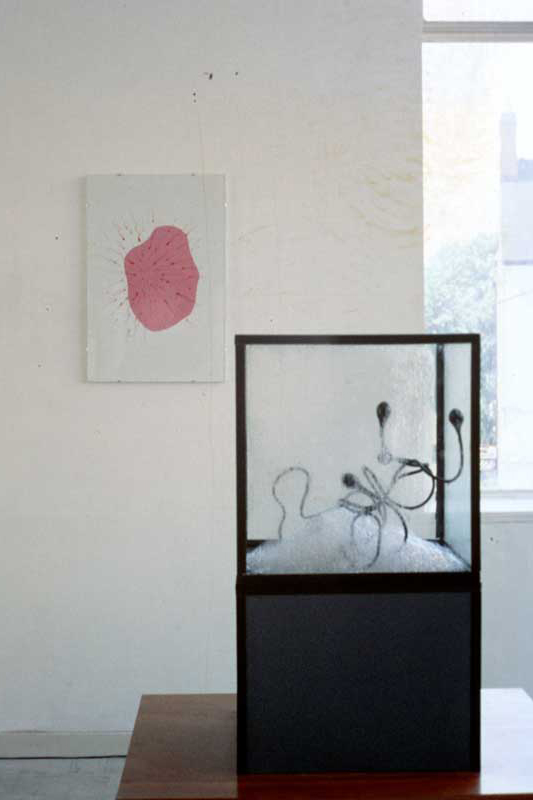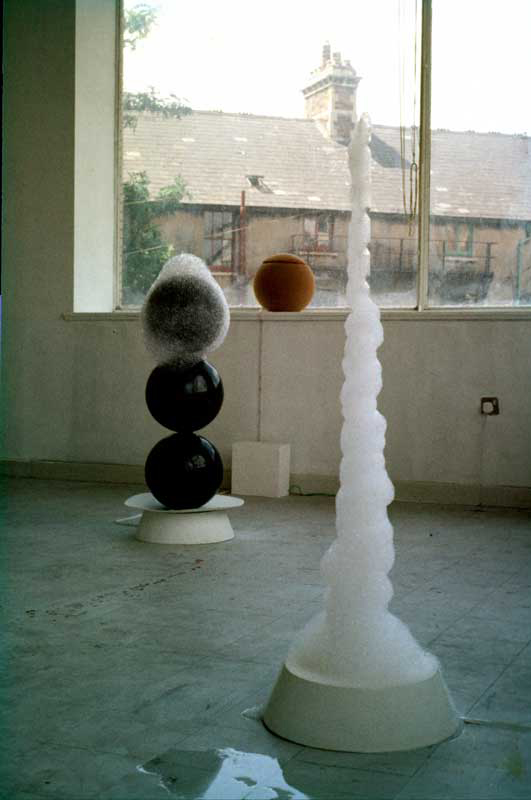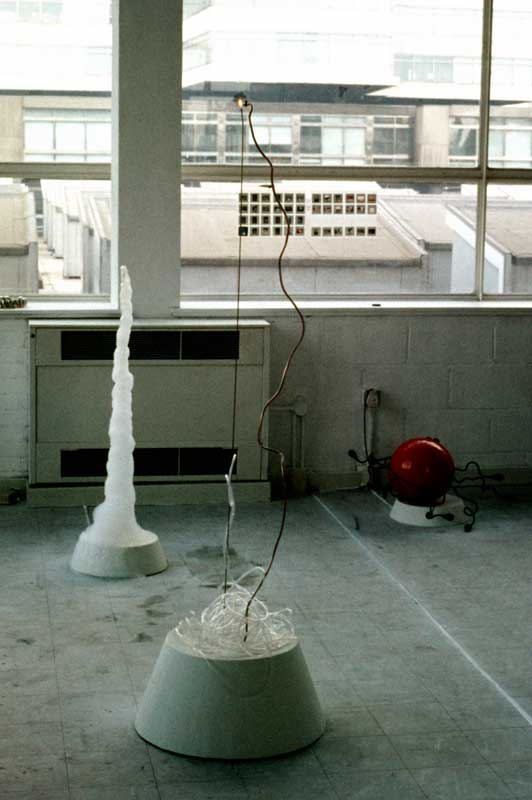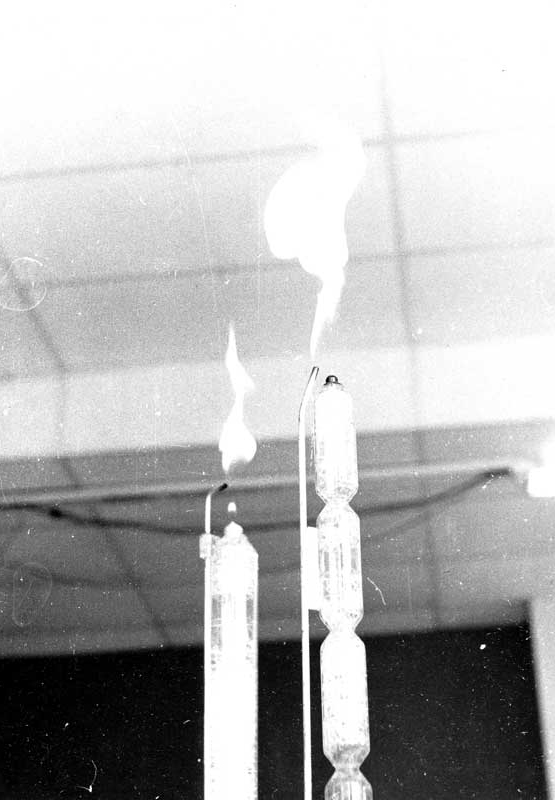Kinetic Sculpture – Liquids
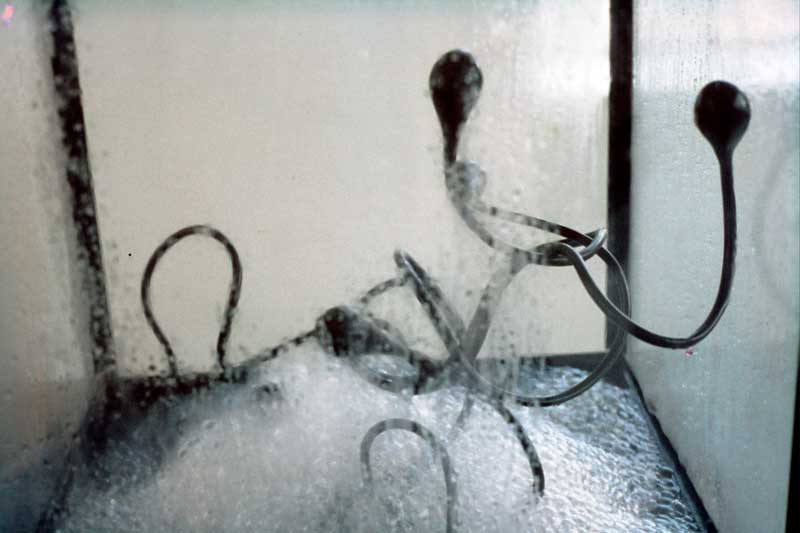
Gordon later started to experiment with bubbles and foam rather than solid spheres, recycling the liquids back into an internal reservoir. A completely enclosed piece had the springy black serpent-like shapes from the Wobbler recoiling when spitting out foam and water to splash against the inside of a transparent cube, creating for itself a damp microclimate of condensation, running droplets and foam.
It had been conceived after exploring ideas for a public sculpture for a shopping precinct where the cube would have been a transparent sphere at least 3 metres in diameter overlooking the passing shoppers.
Rise and Fall used foam and bubbles which intermittently rose up inside a glass column with constrictions every few centimetres almost like the narrowing of an egg timer. After oozing out of the top of the column, the foam would slide down the outside of the glass and slowly build up a cone of foam rather like a soft glistening stalagmite. The foam would gently vibrate to the rhythms of the almost silent internal pump. The liquid from the bursting bubbles would drain back into the base from where it would be recycled, and it was in this piece that Gordon started to see the bubbles almost as individual cells emerging from a fluid, forming larger colonies, and then individually disintegrating and returning to its origins.

The next major piece in this group, All That Glitters, used three football size spheres sat on top of each other. Instead of foam, a series of regular sized bubbles would emerge at intervals from the top of the spheres and build up a cellular structure which over several hours would envelop the spheres. The hard dark violet spheres are a parody of larger man-made structures but with a visual instability being perched on top of each other; while the bubbles, which create flat regular interfaces where they meet, not only have a stronger visual geometric structure, but almost seem endless in the regularity of their creation and their unstoppable advance. Again there would be a slight vibration from the internal pump, and as the moisture of the bubbles slowly evaporated and the walls became thinner, the changing refraction/reflection of light would give them a constantly changing and swirling spectrum of colours, predominantly yellow gold against the violet spheres, but including a range of greens, blues, reds, and oranges. Whilst displaying the piece in an exhibition space, people would interact with the work by gathering the emerging bubbles in their hands to have a closer examination of them.
One of the problems inherent in the bubble structures was that in a cool moist environment the production of bubbles was greater than their disintegration, resulting at times with the advance of the bubble structures beyond the confines of the sculpture and across the studio or gallery floor. To address this problem, instead of injecting air into the liquid to form bubbles he began using flammable gas. As the gas filled bubbles grew they would come into proximity to a pilot light which would ignite the gas in the bubbles. The result would be a very gentle expansion of flame, after which a new set of gas filled bubbles would emerge and repeat the cycle. Before emerging, the gas filled foam or bubbles would pass through tangled coils of transparent tubing, or rise up through glass columns of coloured liquid creating a constant motion below the puffs of flame. The flames began to take on a significance of their own in this cycle of creation and destruction.
